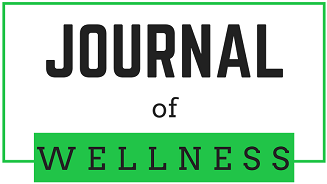
Funder
The authors received funding from Life University for this work.
Conflict of Interest
The authors have no conflict of interest to declare for this work.
Abstract
Introduction: Interest in the topic of well-being continues to grow and has resulted in the creation of a variety of well-being assessments. However, each assessment often brings its own terminology, theories, definitions, and dimensions. This creates a muddled research base that produces inconsistencies in the field of well-being. Therefore, the aim of this review was to identify assessments that measure multiple dimensions of well-being, catalogue and group the dimensions into categories, and develop definitions for the categories based on the conceptualizations in the literature. In doing so, the dimensionality of well-being portrayed in the literature can be better understood.
Methods: Web of Science, MEDLINE, and PsycINFO were used to search for journal articles with the key words well-being, wellbeing, and wellness from 1990 to 2020. Two researchers independently reviewed the search results and obtained 30 articles that met the selection criteria for a total of 26 assessments of well-being. From these 26 well-being assessments, 205 dimensions were identified and cataloged. Two researchers sorted the dimensions into categories first based on similar labels, then by definition. Descriptions of the categories were created from the dimensions.
Results: The 205 well-being dimensions fit into 12 categories: physical, social, spiritual, emotional, environment, mental / intellectual, occupational, energy, achievement, engagement, purpose, and capability. Most assessments centered around 4 primary categories: social (present in 80% of assessments), emotional (77%), physical (69%), and capability (54%); no measure had dimensions in all 12 categories. The energy category provided a unique measure of well-being meriting further investigation.
Conclusions: The literature on the measurement of well-being continues to grow, creating a multitude of assessments from which to choose. There has yet to be a broad multidimensional measure that captures all 12 well-being categories utilized disjointly in the well-being literature. This review provides a better understanding of the dimensions currently in use in the measurement of well-being. Further research is warranted to corroborate these findings and investigate how well-being measurement can be improved.
DOI
10.55504/2578-9333.1140
Recommended Citation
Schonhardt, Samantha; Sullivan, Stephanie; and Shisler Marshall, Rebecca
(2023)
"A Focused Review of Multidimensional Well-Being Assessments,"
Journal of Wellness: Vol. 4
:
Iss.
2
, Article 5.
DOI: https://doi.org/10.55504/2578-9333.1140
Available at:
https://ir.library.louisville.edu/jwellness/vol4/iss2/5
Included in
Alternative and Complementary Medicine Commons, Community Health Commons, Community Health and Preventive Medicine Commons, Social and Behavioral Sciences Commons
